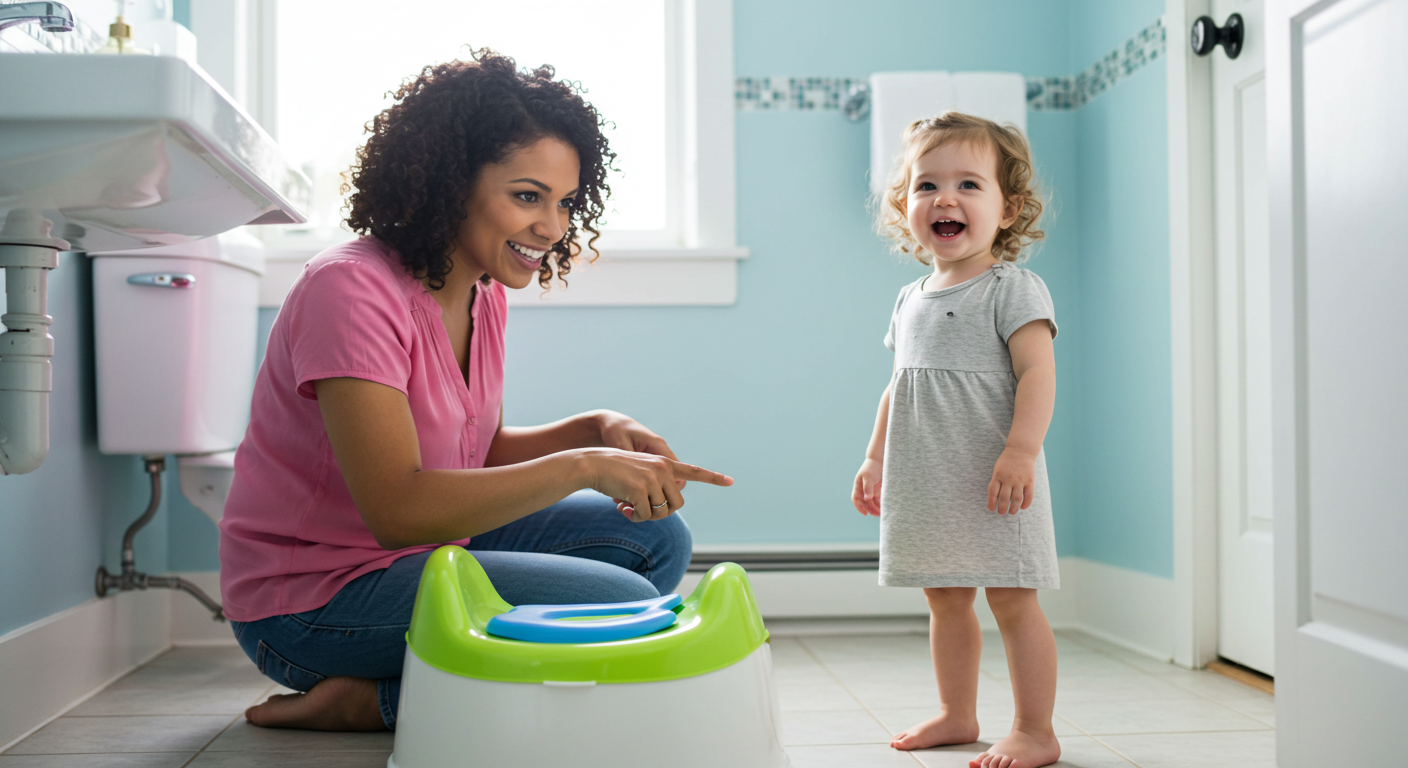When to Start Potty Training:
Signs, Readiness & Expert Tips

Deciding when to start potty training is one of the most important milestones in early childhood. Starting too soon can lead to frustration and setbacks, while waiting too long might delay your child’s independence. Every child is unique, and recognizing the signs of readiness will help make the process smoother and more successful. In this comprehensive guide, we’ll explore how to know when your child is ready, the ideal age range, tips for children with developmental delays, and how to prepare for the potty training journey.
Why Timing Matters: The Importance of Potty Training Readiness
Many parents ask, “When should I start potty training?” The answer depends more on your child’s readiness than their exact age. While the typical potty training age falls between 18 and 24 months, some children may be ready sooner, while others—particularly those with pervasive developmental disorders (PDD-NOS) or characteristics of autism—may take longer to reach this developmental milestone.
It’s crucial not to rush the process. Potty training is more successful when your child is physically, emotionally, and cognitively ready. Starting before these milestones can lead to potty training regression or power struggles that delay long-term progress.
Physical and Behavioral Signs Your Child Is Ready
Understanding when to start potty training begins by observing your child’s development. Below are essential signs your child may be ready:
- Longer periods of dryness (at least 1-2 hours): This indicates bladder control.
- Regular bowel movements: A consistent pattern helps anticipate and manage potty times.
- Physical awareness of elimination: Signs like grunting, hiding, or telling you they’re going.
- Discomfort with dirty diapers: Showing dislike for wet or soiled pull-ups is a good sign.
- Interest in the toilet: Curiosity about bathroom habits or imitating adults.
- Basic communication skills: Using words, gestures, or pictures to express the need to go.
- Motor skills: Ability to pull pants down and sit on a toilet or potty chair.
- Ability to follow simple instructions: Following one- to two-step directions is crucial.
- Desire to please: Kids who seek approval are usually more motivated by rewards and praise.
You can track these behaviors using free potty charts, which serve both as a motivational tool and a readiness checklist.
Common Mistakes That Delay Potty Training
A frequent obstacle parents face is training a child while still using pull-ups. Pull-ups often delay potty success because they don’t allow a child to feel the wetness associated with an accident. Feeling that discomfort is key to learning bladder control. For children who have been in pull-ups for an extended period, the transition to real underwear can be more difficult—but not impossible.
If you're unsure when to start potty training your child because they’re still in pull-ups or diapers, consider trying underwear-only days at home. This allows your child to experience the natural consequences of wetting and promotes faster learning.
When to Start Potty Training Children with Developmental Delays
For children with autism, or other developmental concerns, the timing and process of potty training may require extra patience. These children might show signs of readiness later and may need visual schedules, social stories, or more structured routines to succeed.
In such cases, when to start potty training will still depend on the presence of the core readiness behaviors. Don't hesitate to begin preparing early using picture books, routine bathroom visits, and simple language that emphasizes potty routines. I also recommend my ebook How to Toilet Train a Child with Autism: Without tantrums and meltdowns for any child with a developmental delay.
The Best Age to Start Potty Training
While 18 to 24 months is often the target window, age is not the most important factor—readiness is. Some children might be ready by 16 months, while others may not be ready until they are closer to 3 years old. Starting too early can lead to a power struggle, especially if the child isn’t developmentally prepared.
If you're unsure of your child's readiness, use the checklist mentioned above and consult with your pediatrician. They can help rule out any medical issues like constipation, which can impact toilet training.
Preparing to Start: What Parents Need to Do
Once you've determined your child is ready, the next step is preparation. Download free potty charts to track progress and reward success. Introduce your child to the bathroom and the toilet or potty seat gradually. Let them sit on the potty fully clothed at first, and use encouraging language like, “This is where we pee and poop when we’re ready.”
Start reading books about potty training, and allow your child to observe siblings or parents using the toilet if appropriate. The goal is to make the process familiar and non-threatening.
Use the Potty Training in Three Days Method When Ready
When your child is showing consistent signs of readiness, it’s time to begin the actual training. Many parents have success using the potty training in three days method. This approach works best when your child is fully prepared and you can commit to a few days of focused training. Begin during a weekend or time when your schedule is free.
Day One involves intense focus on potty visits every 15 minutes. Day Two builds on success by stretching the time between visits and encouraging independence. Day Three introduces bathroom use in public places.
You can learn more about each stage here:
If you haven't already, be sure to check out my ebooks, now on Amazon!
References
1. Potty Training Concepts. When to start potty training? What is the right age for potty training? 10-23-10.


